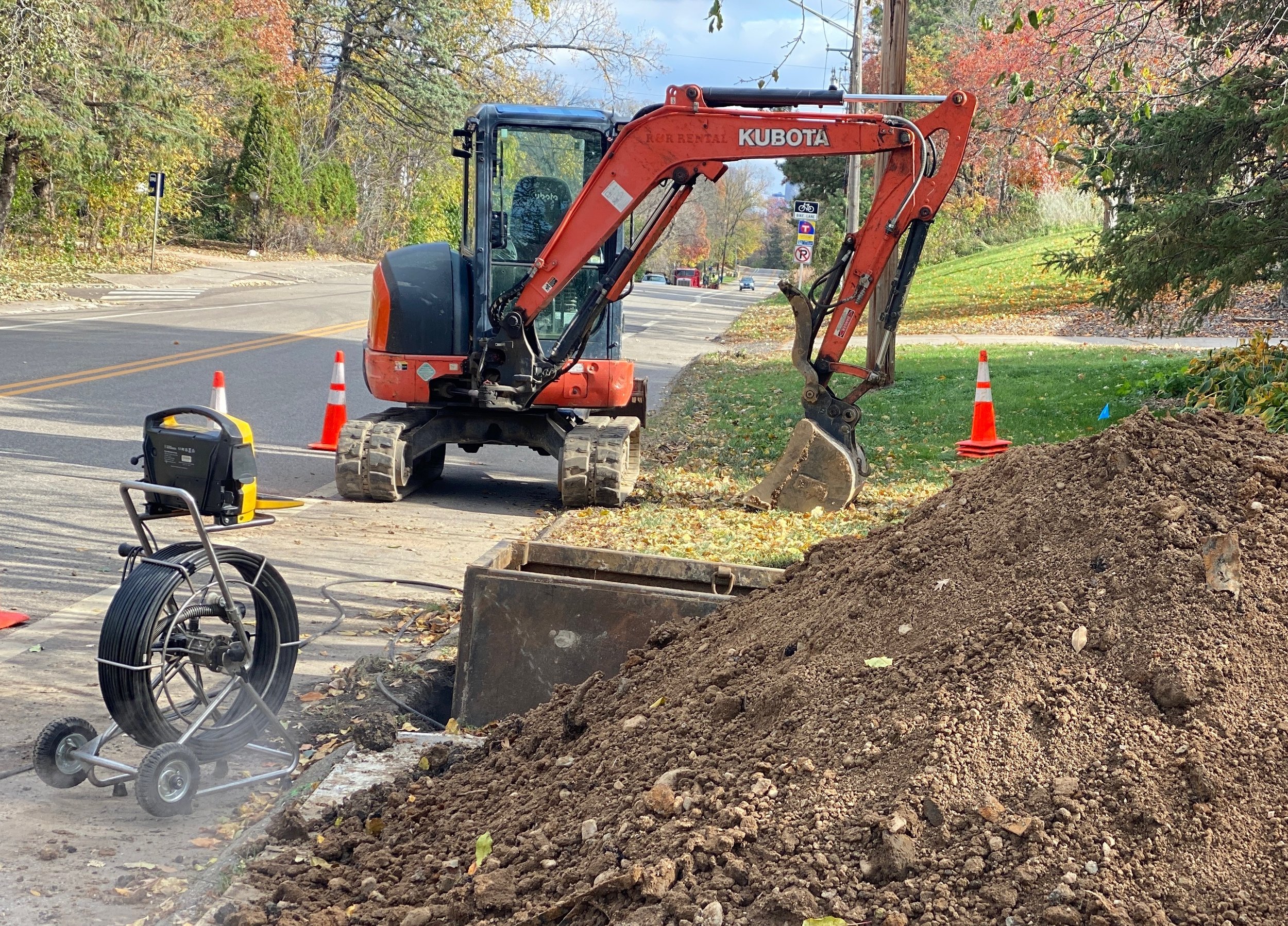Excavation Repair.
When your sewer is completely blocked and backed up, this may be the only solution to get back up and running. Other times we may be able to visually see a break in the line or a small belly and determine that a No-Dig CIPP Sewer Liner would not be able to navigate through the existing piping and excavation would be needed. We also specialize in excavation repairs that are deeper than the standard sewer depth.
Process
We can initially give a basic quote by gathering information from either a camera inspection report or talking on the phone. In order to get you an accurate quote, though, it will require us to send a push camera down the sewer line to the blockage/break and transmit a signal from the camera head, which can be picked up by a locator receiver. We use the locator to figure out depth and location of the excavation spot.
Timeline
Most excavation repairs are completed within 1 day. We do maintain space in our schedule for emergency excavation repairs. We can typically get to these type of repairs within a few days.
What to expect
Excavation can me a messy process as it requires moving a large amount of dirt to access the sewer line (between 6-15ft deep). We arrive onsite with plywood, placing it on the lawn to keep the dirt off the grass. This allows us only to backfill the dirt into the hole upon completion and only have minimal disturbance to your lawn. Most excavation repairs are no larger than a 4x6 foot hole.
FAQs
-
We can determine if excavation is necessary based on a video scope of your sewer line. If your sewer line is open and draining, we can televise the sewer from the house out to the city main (typically in the middle of the street). This video will allow us to see if the piping is properly pitched and if there is any dips, cracks, breaks or offsets that cannot be fixed with a No-Dig CIPP Liner. While we have the camera down the sewer line, we can locate these issues spots and determine the best course of action.
If the sewer line still backed up after having a professional try to clear the blockage, and we cannot see where the blockage/break is in the line, we will locate blockage/break and start the excavation there.
-
Excavation of a complete sewer line requires us to dig up from the front of the house out to the middle of the road. This can be extremely expensive as every year there are more utilities in the ground which have to be dug around safely. In addition, when digging into a city street, there is a higher permit cost, restoration of road cost, and excavation cost, as the sewer main in the street, which we have to connect to, is typically 12-15ft deep. We find that we can save our customers thousands by offering them No-Dig CIPP Liner options when applicable.
-
Sewer excavation involves digging into the ground to access and repair or replace underground sewer pipes. Here's how the process typically works:
Locating the Problem | First, technicians use various methods such as CCTV inspections, dye tests, or ground-penetrating radar to identify the location and nature of the sewer problem, such as a blockage, leakage, or structural damage.
Site Preparation | The area around the identified problem site is prepared for excavation. This may involve removing obstacles, ensuring safety measures are in place, and marking the dig site.
Excavation | Excavators, backhoes, or other heavy machinery are used to dig a trench or hole at the excavation site. The size of the excavation depends on the extent of the repair or replacement needed. Workers take care to dig carefully to avoid damaging existing utilities or infrastructure nearby.
Pipe Access | Once the excavation site is prepared, the damaged section of the sewer pipe is exposed. Workers may need to dig deeper or wider to provide enough space to access the pipe and perform the necessary repairs or replacements.
Repair or Replacement | Depending on the severity of the issue, the damaged section of the sewer pipe is repaired or replaced. Repairs might involve sealing cracks or joints, while replacements typically involve removing the damaged pipe section and installing a new one.
Backfilling | After the repair or replacement is completed, workers backfill the excavation site with soil. Proper compaction of the soil is essential to prevent future settling. Sometimes, additional materials like gravel or sand are used to ensure stability.
Restoration | The area above the repaired or replaced sewer line is restored to its original condition. This might involve replacing pavement, grass, or other landscaping features that were disturbed during the excavation process.
Inspection and Testing | The repaired or replaced sewer line is inspected and tested to ensure that it functions properly and meets the required standards.
Sewer excavation can be a complex process, and it's crucial to follow safety protocols and local regulations to ensure the work is done efficiently and without causing further damage to the surrounding environment or infrastructure.
Done right the first time.
Would you like to know more or request a quote for a project?

